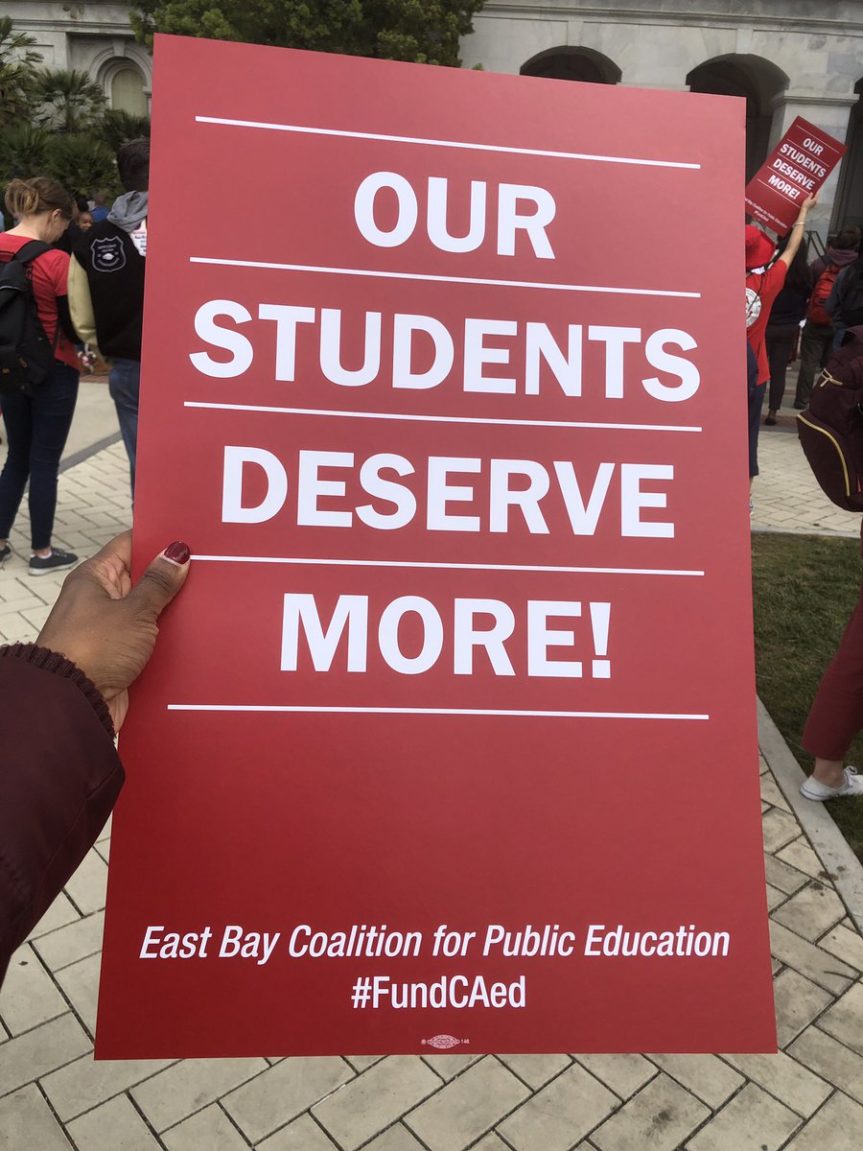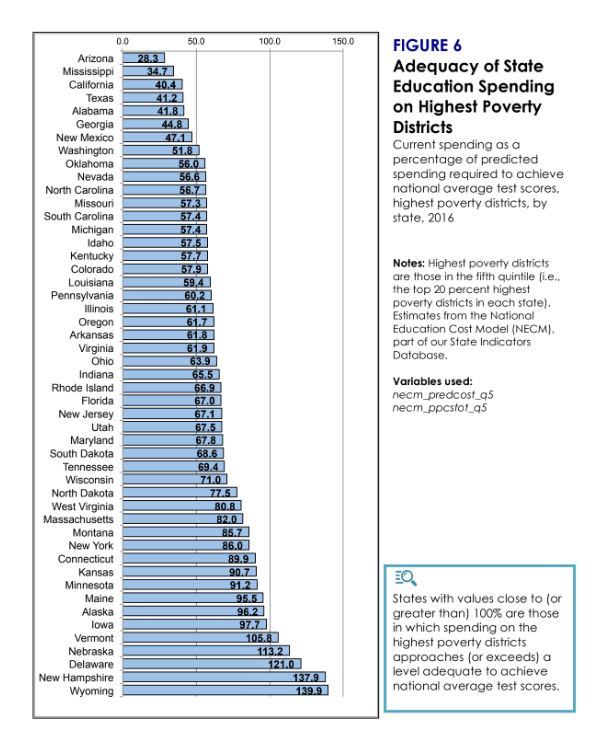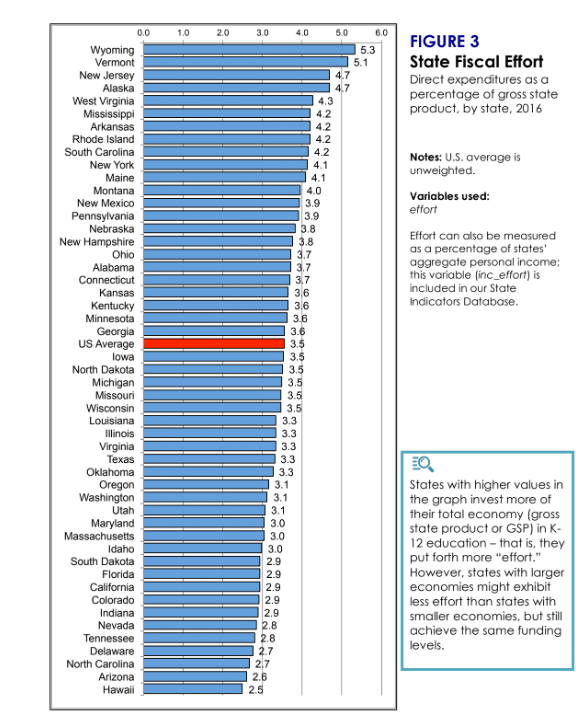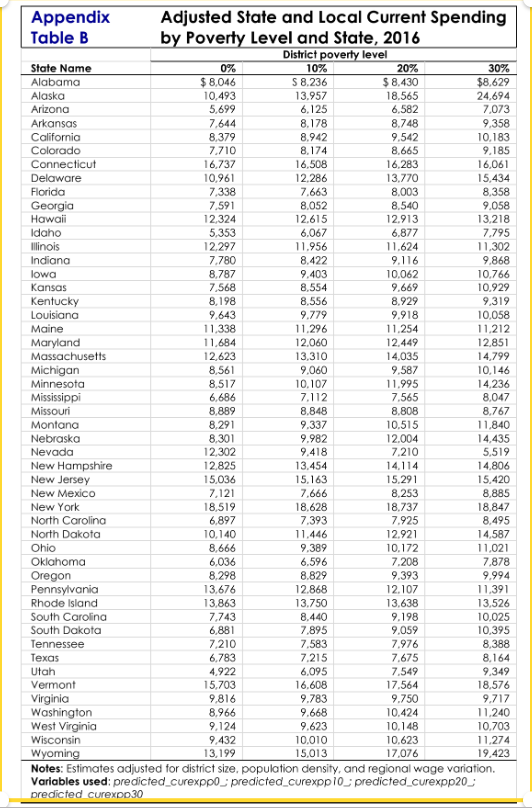California’s inadequate and broken school funding system was on display as a bottom dweller in overall funding, funding effort, and also student outcomes tied to funding gaps in the latest report from school financedata.org, The Adequacy and Fairness of State School Funding Systems. As strikes echo across the state, districts cut, everyone fights for crumbs, and pension cost increases outstrip any new revenue, this report should be one more nail in the coffin of California’s school funding paralysis. It should drive us to action.
Let’s take a look at the report, some of the implications for the state, and what we can do.
Based on “Fiscal Effort” We Don’t Really Care about Kids
California is the richest state in the richest country in the history of the world. However, we are 41st our “effort” to fund education. Which basically looks at what percentage of the state’s total income goes to K-12 spending. In CA it’s roughly 2.9%, which is below Florida, Texas, and a bunch of other states that should not be ahead of us in “effort”. The national average is 3.5%, and New York is 4.1%. This translates into roughly 10K per child in CA versus 18K in New York. And those differences matter. It is not just the pure student spending it is also the way that the highest needs students get funded, which again is much more equitable in a place like NY.
How we spend our money really defines what our priorities are. And we need to re prioritize our children. I have looked at this issue before, but come on, Florida…
I copied the tables from the report at the end of the blog.
California is 3rd from Last in School Funding Adequacy
Only Arizona and Mississippi score below California on providing “adequate” resources to schools. Funding adequacy basically looks at how much the state would have to spend to get its students up to the national average on standardized tests. California spends 40.4% of what would be required to provide an adequate education. And let me repeat, the only states lower than us were Arizona and Mississippi.
Arizona and Mississippi. One state voted not to have holiday for Dr. King and the other is…well…Mississippi.
The Impact of Underfunded Pensions
California has increased funding significantly for education over the last several years. However, because we chronically underfund our pensions, and we still pay out (rightly) what we promised retirees, the reality is the current students are paying for yesterdays pensions.
There is no separate pot of pension money out there really. What does this mean? Well according to the County Office schools will pay $1,474 per student for retirees in 2023, while they only paid $497 in 2013. These rapidly escalating costs—which well managed states don’t have, even further undermine school funding challenges. Again, to compare to NY, 91% of their pensions are funded, while in CA it’s 69%. California’s unfunded pension liability is $107 billion.
The Funding Fix
Our children are not only our future they are our fate. This chronic underinvestment in them, will come back to haunt us. We do have options though. The first thing we need to do is reform Proposition 13. Which in one day reduced Ca school funding by 1/3rd, by capping property taxes for poor retirees, and mega millionaires and fortune 500 companies. This proposal would make businesses pay their fair share while keeping residential units subsidized. Which s a good start.
But we still need to raise more revenue and more varied revenue and to bail out and reform the pension process. John Affeldt from Public Advocates raises a host of potential revenue sources in a provocative Edsource article from taxing services, to taxing gas extraction (which we don’t), and host of other revenue sources in between. So I am heartened to see the marches to Sacramento, and the calls to legislators to fix the funding. Investing in our children needs to be our priority.
We won’t be a great state without great schools. And we won’t have great schools unless we are willing to invest in them.
Tables from the Report




